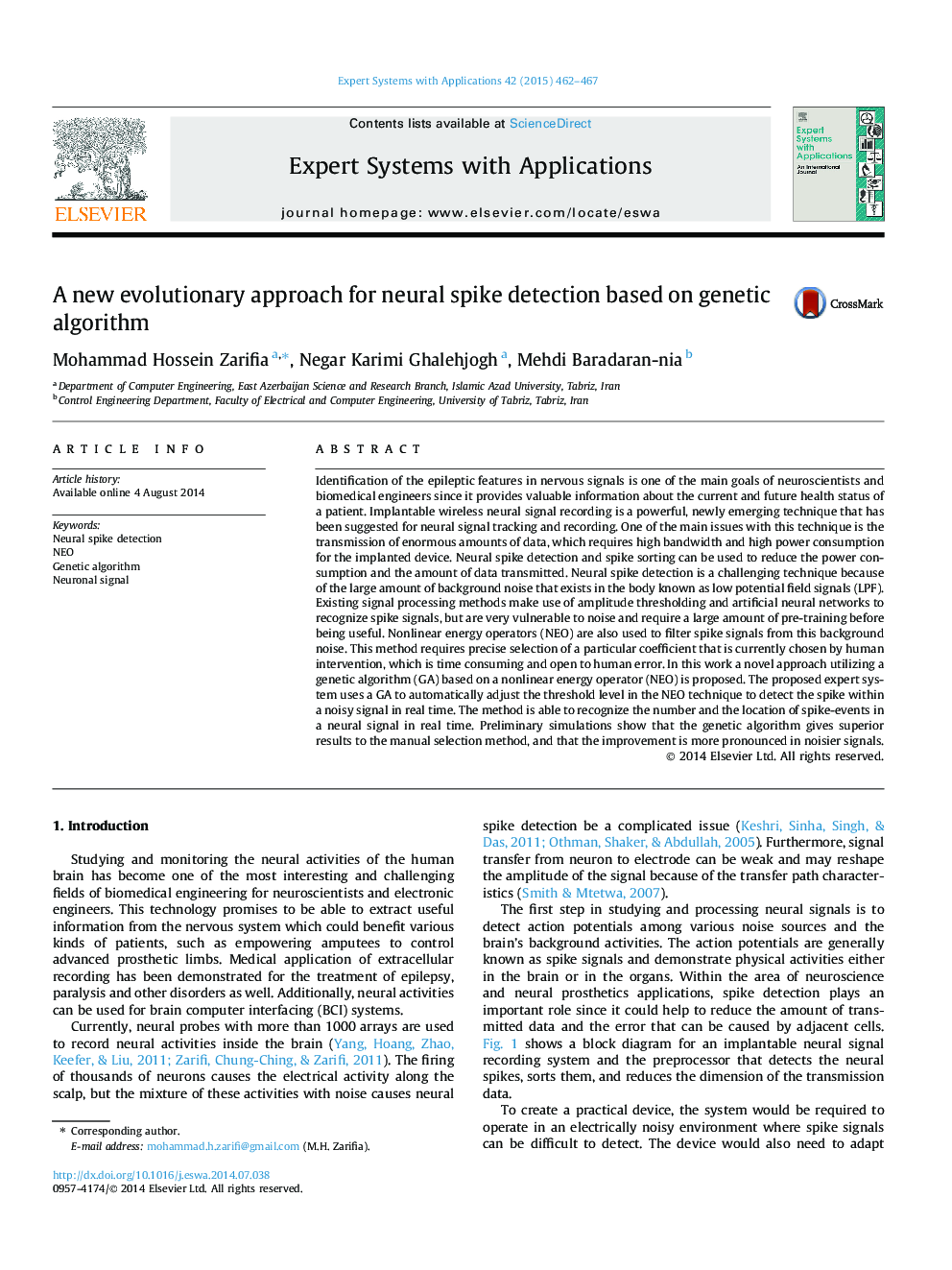| Article ID | Journal | Published Year | Pages | File Type |
|---|---|---|---|---|
| 382950 | Expert Systems with Applications | 2015 | 6 Pages |
•Independently adaptive neural spike detection implementing genetic algorithm.•Improved spike detection offers lower transmission power consumption.•Potential for self-programming hardware implementation.
Identification of the epileptic features in nervous signals is one of the main goals of neuroscientists and biomedical engineers since it provides valuable information about the current and future health status of a patient. Implantable wireless neural signal recording is a powerful, newly emerging technique that has been suggested for neural signal tracking and recording. One of the main issues with this technique is the transmission of enormous amounts of data, which requires high bandwidth and high power consumption for the implanted device. Neural spike detection and spike sorting can be used to reduce the power consumption and the amount of data transmitted. Neural spike detection is a challenging technique because of the large amount of background noise that exists in the body known as low potential field signals (LPF). Existing signal processing methods make use of amplitude thresholding and artificial neural networks to recognize spike signals, but are very vulnerable to noise and require a large amount of pre-training before being useful. Nonlinear energy operators (NEO) are also used to filter spike signals from this background noise. This method requires precise selection of a particular coefficient that is currently chosen by human intervention, which is time consuming and open to human error. In this work a novel approach utilizing a genetic algorithm (GA) based on a nonlinear energy operator (NEO) is proposed. The proposed expert system uses a GA to automatically adjust the threshold level in the NEO technique to detect the spike within a noisy signal in real time. The method is able to recognize the number and the location of spike-events in a neural signal in real time. Preliminary simulations show that the genetic algorithm gives superior results to the manual selection method, and that the improvement is more pronounced in noisier signals.
